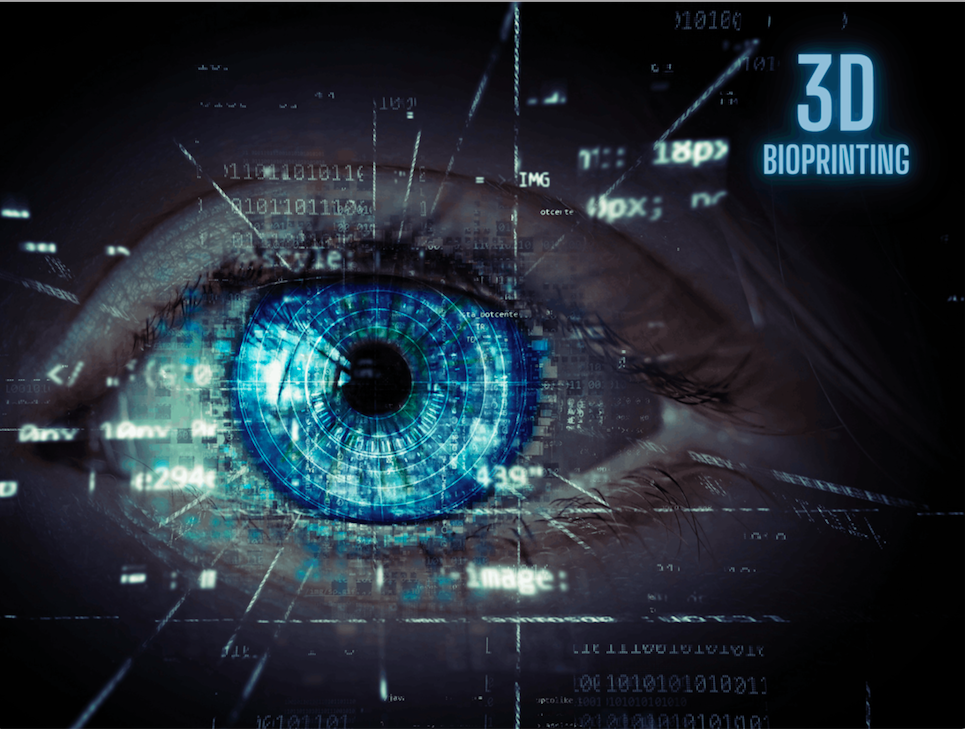Scientists at the National Eye Institute (NEI), part of the National Institutes of Health, have made a significant advancement in the field of 3D bioprinting by successfully creating functional eye tissue using this innovative technique. The potential for this development to revolutionize the treatment of eye conditions and diseases is vast, and further research will undoubtedly continue to build upon these groundbreaking findings.
The research team used 3D bioprinting and patient stem cells to create eye tissue that will help researchers better understand blinding diseases. The team printed a combination of cells that make up the outer blood-retina barrier, a type of eye tissue that supports the retina’s photoreceptors. This technique could potentially provide an unlimited supply of patient-derived tissue for studying degenerative retinal diseases like age-related macular degeneration (AMD).
Age-related Macular Degeneration
AMD typically begins at the outer blood-retina barrier, but the exact mechanisms of how it starts and progresses to advanced dry and wet stages are not well understood. This is because there are currently no human models that accurately replicate the physiological conditions related to AMD.
The outer blood-retina barrier is made up of two layers: the retinal pigment epithelium (RPE) and Bruch’s membrane, which is located between the RPE and the blood vessels in the choriocapillaris. Bruch’s membrane is responsible for exchanging nutrients and waste between the choriocapillaris and the RPE. In age-related macular degeneration, deposits called drusen form outside of Bruch’s membrane, causing it to malfunction. This leads to the breakdown of the RPE and, ultimately, the degeneration of photoreceptors and loss of vision.
The research team used 3D bioprinting to combine three types of immature choroidal cells in a hydrogel: pericytes and endothelial cells, which are important components of small blood vessels, and fibroblasts, which provide structure to tissues. They printed the hydrogel on a biodegradable scaffold, and within a few days, the cells began to mature and form a dense network of small blood vessels.
On the ninth day of the experiment, the researchers placed cells that line the pigmented part of the eye (called retinal pigment epithelial cells) on the underside of a scaffold. The printed tissue fully developed after 42 days. Testing showed that the printed tissue resembled natural outer blood-retina barrier tissue in both appearance and function. When subjected to stress, the printed tissue displayed early signs of age-related macular degeneration, such as the formation of drusen deposits under the RPE and tissue degradation. When exposed to low levels of oxygen, the printed tissue exhibited characteristics similar to wet AMD, including the abnormal growth of blood vessels in the choroid (a layer of blood vessels under the retina) that spread into the area under the RPE. However, treatment with anti-VEGF drugs, which are used to treat AMD, suppressed this abnormal vessel growth and restored the tissue’s normal appearance.
Using 3D printing technology to create cells allowed the researchers to replicate the necessary communication between cells that is required for a healthy outer blood-retina barrier in the eye. For instance, the model has demonstrated that the presence of RPE cells leads to genetic changes in fibroblasts that help form Bruch’s membrane, something that was previously only theorized but not proven until now.
The researchers faced a number of technical challenges, including finding a suitable biodegradable scaffold and creating a consistent printing pattern using a temperature-sensitive hydrogel. They were able to achieve distinct rows of tissue with this hydrogel when it was cold, but it dissolved when it warmed up. This consistent printing pattern allowed them to measure tissue structures more accurately. They also worked to optimize the ratio of different types of cells, including pericytes, endothelial cells, and fibroblasts, in the mixture they used to create the tissue.
The research team is utilizing 3D printed models of the blood-retina barrier to examine age-related macular degeneration and is exploring the possibility of including additional cell types, like immune cells, in the printing process in order to replicate natural tissue more accurately.
Final Thoughts
In conclusion, NIH researchers have made significant progress in the field of 3D bioprinting by successfully creating functional eye tissue. This groundbreaking achievement has the potential to revolutionize the way we treat and understand eye-related conditions, such as age-related macular degeneration. The use of 3D bioprinting technology allows for the creation of precise and customized tissue models that can be used for research and testing purposes, ultimately leading to the development of more effective and targeted treatments for various diseases and disorders.
Article Source: Reference Paper | Reference Article
Learn More:
Top Bioinformatics Books ↗
Learn more to get deeper insights into the field of bioinformatics.
Top Free Online Bioinformatics Courses ↗
Freely available courses to learn each and every aspect of bioinformatics.
Latest Bioinformatics Breakthroughs ↗
Stay updated with the latest discoveries in the field of bioinformatics.
Dr. Tamanna Anwar is a Scientist and Co-founder of the Centre of Bioinformatics Research and Technology (CBIRT). She is a passionate bioinformatics scientist and a visionary entrepreneur. Dr. Tamanna has worked as a Young Scientist at Jawaharlal Nehru University, New Delhi. She has also worked as a Postdoctoral Fellow at the University of Saskatchewan, Canada. She has several scientific research publications in high-impact research journals. Her latest endeavor is the development of a platform that acts as a one-stop solution for all bioinformatics related information as well as developing a bioinformatics news portal to report cutting-edge bioinformatics breakthroughs.






